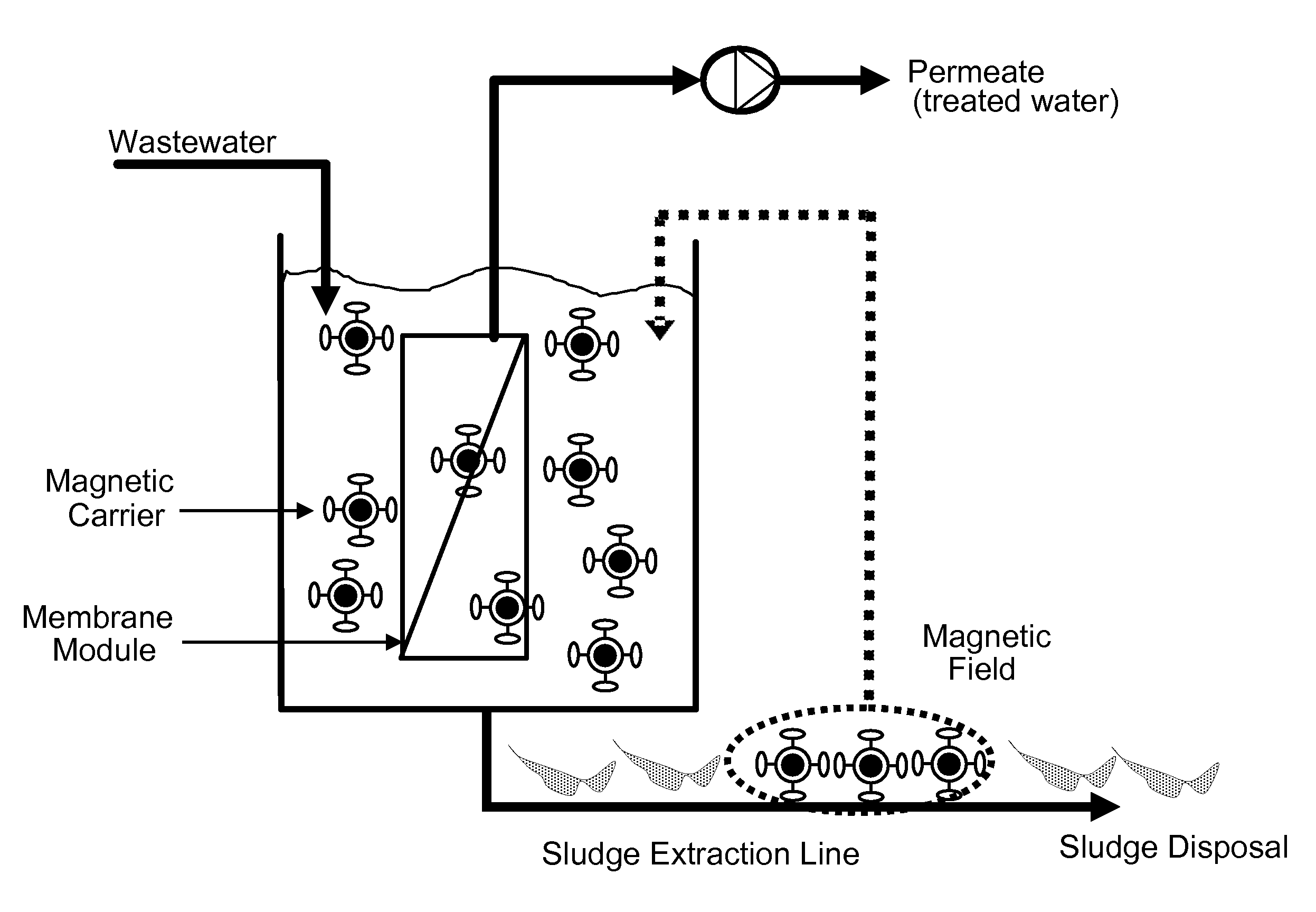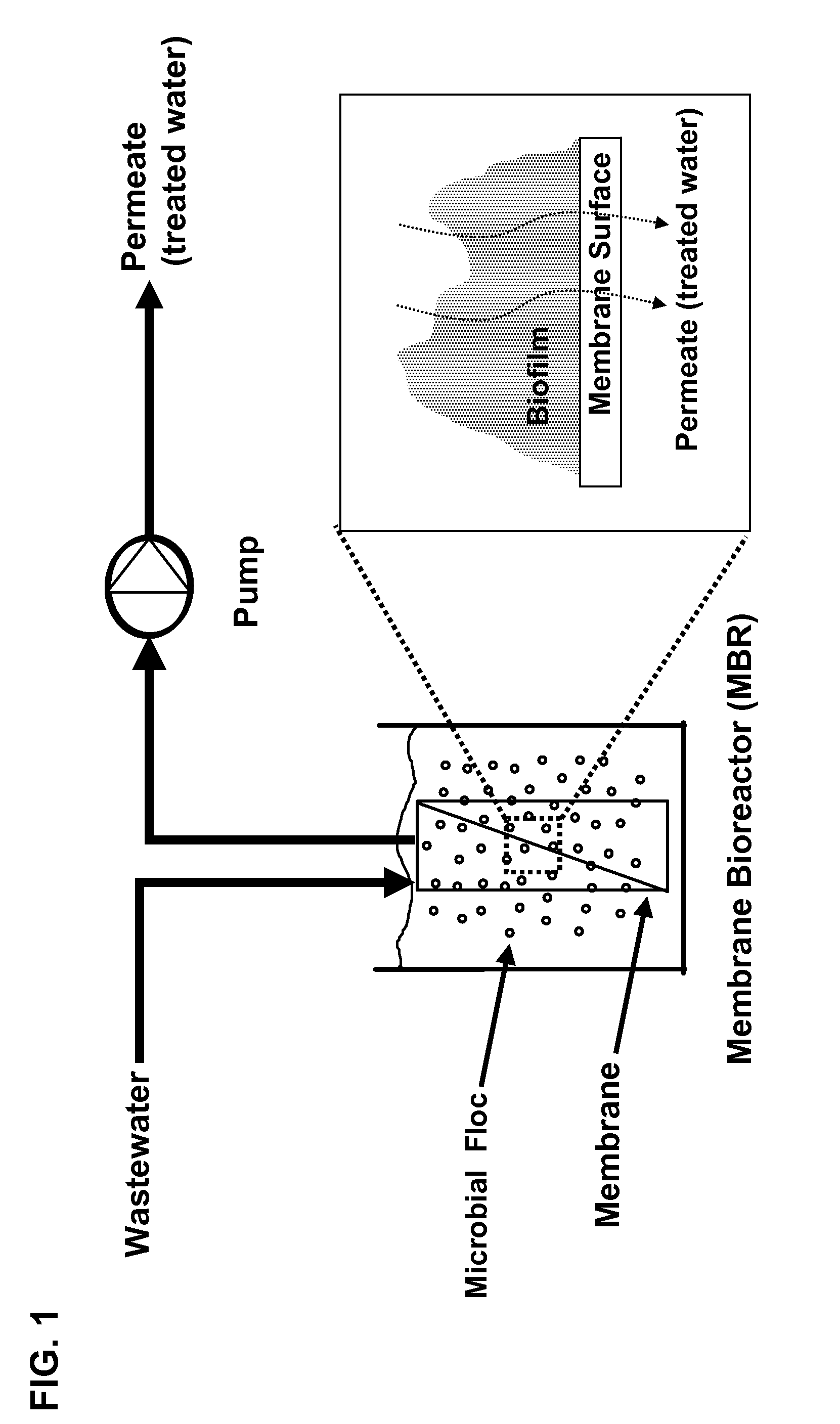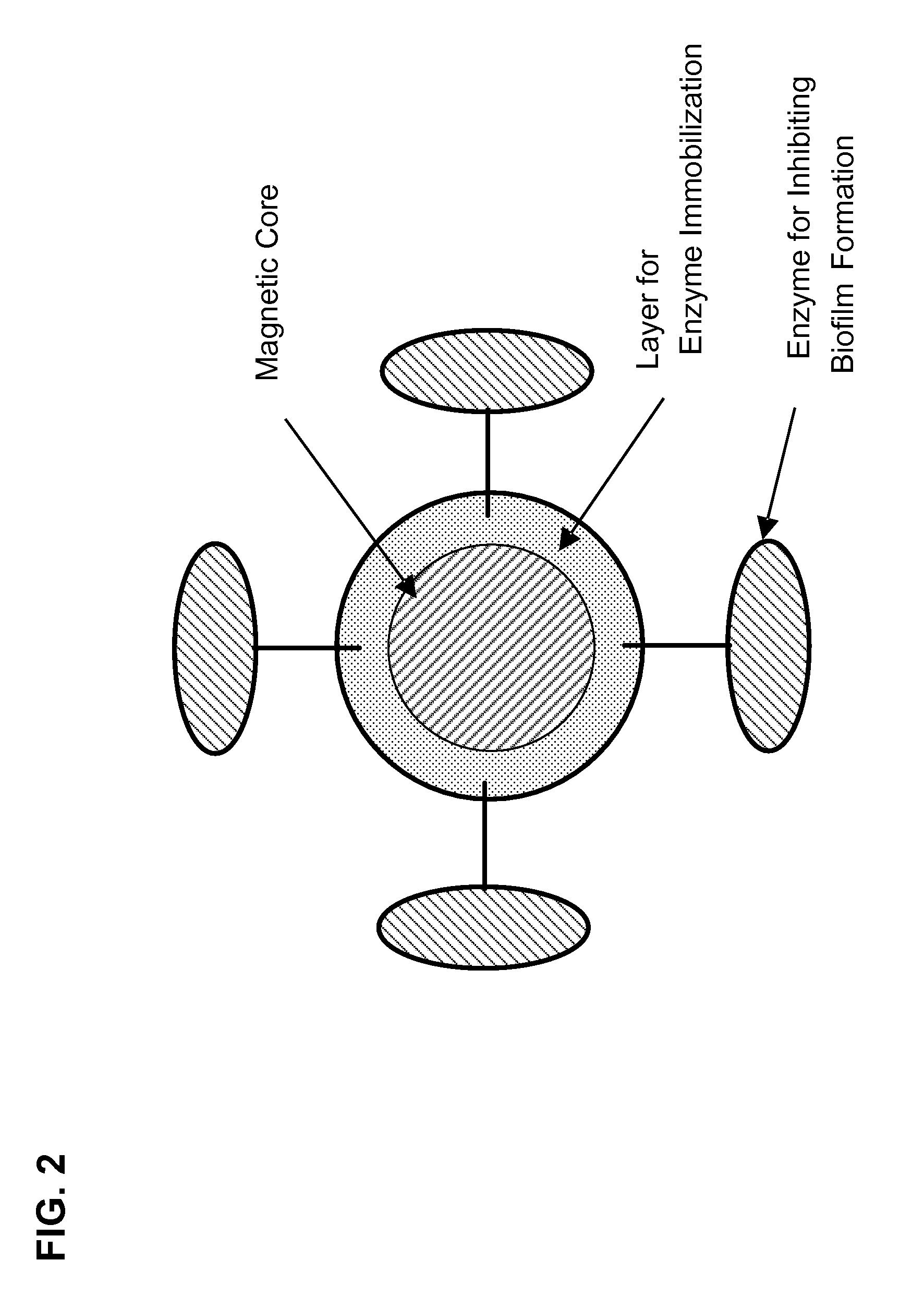Magnetic carrier and membrane bioreactor comprising enzyme for inhibiting biofilm formation
a bioreactor and magnetic carrier technology, applied in the direction of biological water/sewage treatment, filtration separation, separation processes, etc., can solve the problems of shortening the cleaning cycle and lifespan of the membrane, increasing the energy consumption required in filtration, and deteriorating economic efficiency, so as to achieve stable operation over a long period
- Summary
- Abstract
- Description
- Claims
- Application Information
AI Technical Summary
Benefits of technology
Problems solved by technology
Method used
Image
Examples
preparation example
Preparation of a Magnetic Carrier
[0047]A commercially available magnetic ion exchange resin {MIEX, produced by ORICA} was used as a magnetic core, and a layer for enzyme immobilization is formed on the magnetic core by a LBL method using electrostatic interaction (attraction).
[0048]Specifically, 20 mL of poly(sodium-4-styrene sulfonate) (PSS) solution (1% w / v), which is solution of anionic polyelectrolyte, was added in the magnetic ion exchange resin (1 g) carrying positive charge, and stirred to form a PSS layer on the magnetic resin surface. 20 mL of poly(D-glucosamin) deaceylated chitin (“chitosan”) solution (1% w / v), which is solution of a cationic polyelectrolyte, was added to the resultant resin, thereby forming a layer for enzyme immobilization consisting of PSS-chitosan over the resultant resin, and an amine group of chitosan was used in the next step, chemical immobilization of the enzyme.
[0049]A zeta potential on the surface of the magnetic ion exchange resin was measured ...
example 1
Application in a MBR (Batch Type) Process
[0053]The magnetic carrier comprising immobilized enzyme prepared from the above Preparation Example was applied to a lab scale MBR process (see FIG. 8). In order to observe the effect of biofouling alone by a biofilm formed by self-growth of the microorganism attached on the membrane surface, the MBR was operated with a batch type (total recycle method) where a microorganism layer transferred and accumulated from a suspended region to the membrane surface region in a MBR is swept away by inflow of permeate (treated water) which is circulated from a reservoir to a membrane module.
[0054]Specifically, after activated sludge was inoculated to synthetic wastewater in a 150 mL reservoir (flask), the synthetic wastewater and the activated sludge were transferred and circulated through a pump into a glass tube (hollow fiber module) where a hollow fiber membrane was vertically included. The filtration was performed with a batch type (total recycle me...
example 2
Application in a MBR (Continuous Type) Process
[0057]The magnetic carrier comprising immobilized enzyme prepared from the above Preparation Example was applied in a laboratory-scaled MBR process of continuous type (see FIG. 10). Example 2 was performed to simulate an actual MBR process where flow of wastewater and filtration of treated water were continuously performed.
[0058]The same synthetic wastewater and activated sludge as those of Example 1 were used. The magnetic carrier comprising immobilized enzyme (0.5 g) of the present invention was put into a reactor which has a working volume of 1 L and mixed liquor suspended solids (MLSS) of 26,000 (±1,300 mg / L), so that enzyme concentration in MBR reactor is to be 8.3 ppm. While the synthetic wastewater flowed into a reactor at a flow rate of 100 ml / hr {hydraulic retention time (HRT): 10 hr}, the synthetic wastewater was filtered with a constant flux, 15 LMH (l·m−2·hr−1), through a hollow fiber membrane module {membrane area: 0.008 m2,...
PUM
| Property | Measurement | Unit |
|---|---|---|
| pore size | aaaaa | aaaaa |
| diameter | aaaaa | aaaaa |
| concentration | aaaaa | aaaaa |
Abstract
Description
Claims
Application Information
 Login to View More
Login to View More - R&D
- Intellectual Property
- Life Sciences
- Materials
- Tech Scout
- Unparalleled Data Quality
- Higher Quality Content
- 60% Fewer Hallucinations
Browse by: Latest US Patents, China's latest patents, Technical Efficacy Thesaurus, Application Domain, Technology Topic, Popular Technical Reports.
© 2025 PatSnap. All rights reserved.Legal|Privacy policy|Modern Slavery Act Transparency Statement|Sitemap|About US| Contact US: help@patsnap.com



